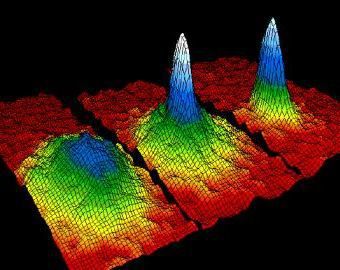-
 Isomalt
Isomalt
-
 Irreversible reaction
Irreversible reaction
-
 SSH
SSH
-
 Luminosity
Luminosity
-
 Riveting
Riveting
-
 Joule effect
Joule effect
-
 Decarboxylation
Decarboxylation
-
 Geosynchronous orbit
Geosynchronous orbit
-
 Be star
Be star
-
 SACD
SACD
-
 Combustion chamber
Combustion chamber
-
 Euhedral
Euhedral
-
 Villi
Villi
-
 Forums
Forums
-
 Anti-aliasing
Anti-aliasing
-
 Double-flow controlled mechanical ventilation (CMV)
Double-flow controlled mechanical ventilation (CMV)
-
 Ecosystem
Ecosystem
-
 Expectorate
Expectorate
-
 Direct renin inhibitor
Direct renin inhibitor
-
 Maritime pine
Maritime pine
-
 Osmolarity
Osmolarity
-
 Dew
Dew
-
 MPEG-4
MPEG-4
-
 Prime-boost
Prime-boost
-
 Vitamin A
Vitamin A
-
 T Tauri
T Tauri
-
 Type III star population
Type III star population
-
 Random number
Random number
-
 Ginger
Ginger
-
 Signalling
Signalling
Bose-Einstein Condensate
Bose-Einstein condensate is a special state that can occur in a very low temperature quantum gas.
It was predicted by Einstein in 1924 following work by the Indian physicist Bose, and is based on the principle that bosons (particles with integer spin) can occupy the same quantum state, unlike fermions which obey the Pauli exclusion principle. What Einstein discovered was that for a given boson gas there is a critical temperature below which a macroscopic number of quantum particles populate the state of least energy, forming a "Bose-Einstein condensate".
In such a state, the particles all lose their individuality and the condensate must be described as a macroscopic quantum object. In particular, the wave aspect of matter (cf. the quantum wave-particle duality) becomes visible on a large scale, as is also the case with a superfluid, though a superfluid is different from a Bose-Einstein condensate because of the strong interactions between its constituents.
The first observation of a Bose-Einstein condensate of an atomic gas was in 1995 following the work of Eric Cornell and Carl Wieman who cooled a rubidium gas to below 170 nanokelvins. For this experiment they shared the 2001 Nobel prize for Physics with Wolfgang Ketterle.
 The formation of a Bose-Einstein condensate.
The formation of a Bose-Einstein condensate.
Latest
Fill out my online form.



